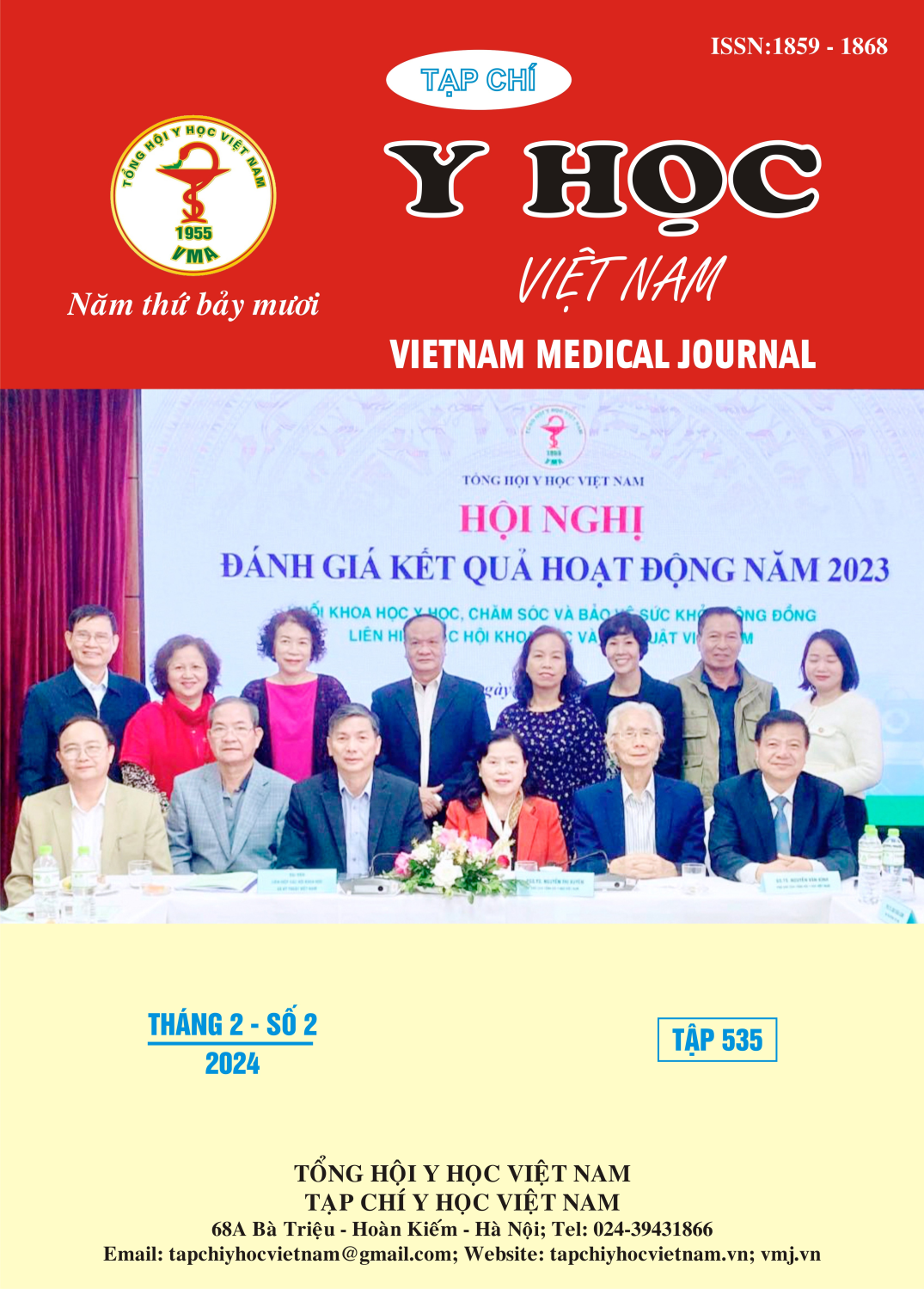COST – EFFECTIVENESS ANALYSIS OF EDOXABAN IN TREATMENT OF NONVALVULAR ATRIAL FIBRILLATION IN VIETNAM
Main Article Content
Abstract
Background: Edoxaban is a novel oral anticoagulant approved for the prevention of stroke and systemic embolism in patients with nonvalvular atrial fibrillation (NVAF) and the treatment of venous thromboembolism. In addition to clinical effectiveness, cost-effectiveness must be considered in drug prescription decisions within clinical settings, especially in the context of constrained healthcare budgets. Therefore, a cost-effectiveness analysis of edoxaban compared to the currently used and alternative drugs under the Vietnamese national health insurance is imperative, as similar studies have been conducted worldwide but not in Vietnam. Methods: Analyzing cost-effectiveness using a study design modeled through a Markov model from the Vietnamese healthcare payer perspective. The input parameters were extracted from clinical studies, literature reviews, and clinical expert opinion, as well as tender results at the time of the study. Results: Compared to rivaroxaban, patients with NVAF treated with edoxaban had a greater average QALYs at a lower lifetime treatment cost. Compared to dabigatran, edoxaban saved costs and reduced QALYs, with each QALY reduction associated with a cost saving of 322.37 million VND. Conclusions: From the Vietnamese healthcare payer perspective, with the threshold of 3 GDP per capita of Vietnam, edoxaban was dominant over rivaroxaban and achieved cost-effectiveness compared to dabigatran.
Article Details
References
2. A. M. Ajabnoor, Zghebi, Salwa S., Parisi, Rosa et al., "Incidence of nonvalvular atrial fibrillation and oral anticoagulant prescribing in England, 2009 to 2019: A cohort study," PLoS medicine, vol. 19, no. 6, p. e1004003, 2022.
3. M. Y. Bertram, Lauer, Jeremy A., Stenberg, Karin et al, "Methods for the economic evaluation of health care interventions for priority setting in the health system: an update from WHO CHOICE," International Journal of Health Policy and Management, vol. 10, no. 11, p. 673, 2021.
4. L. Claxton, Taylor, M., Lewis, L. et al, "Cost-Effectiveness Of Edoxaban Compared With Other Licensed Noacs For The Prevention Of Stroke And Systemic Embolic Events In The Uk," Value in Health, vol. 18, no. 7, p. A396, 2015.
5. M. F. Drummond, Sculpher, Mark J., Claxton, Karl et al, Methods for the economic evaluation of health care programmes. Oxford university press, 2015.
6. R. Hutubessy, Chisholm, Dan, Edejer, Tessa Tan-Torres et al, "Generalized cost-effectiveness analysis for national-level priority-setting in the health sector," Cost effectiveness and resource allocation, vol. 1, pp. 1-13, 2003.
7. M. Krejczy, J. Harenberg, M. Wehling, K. Obermann, and G. Y. H. Lip, "Cost-effectiveness of anticoagulation in patients with nonvalvular atrial fibrillation with edoxaban compared to warfarin in Germany," BioMed research international, vol. 2015, 2015.
8. I. Lekuona, Anguita, Manuel, Zamorano, José Luis et al, "Would the use of edoxaban be cost-effective for the prevention of stroke and systemic embolism in patients with nonvalvular atrial fibrillation in Spain?," Revista Española de Cardiología (English Edition), vol. 72, no. 5, pp. 398-406, 2019.
9. G. Y. H. Lip, Mitchell, Stephen A., Liu, Xianchen et al, "Relative efficacy and safety of non-Vitamin K oral anticoagulants for non-valvular atrial fibrillation: Network meta-analysis comparing apixaban, dabigatran, rivaroxaban and edoxaban in three patient subgroups," International Journal of Cardiology, vol. 204, pp. 88-94, 2016. [Online]. Available: https://www.internationaljournalofcardiology.com/article/S0167-5273(15)30893-7/fulltext.
10. J. D. Miller, Ye, Xin, Lenhart, Gregory M. et al, "Cost-effectiveness of edoxaban versus rivaroxaban for stroke prevention in patients with nonvalvular atrial fibrillation (NVAF) in the US," ClinicoEconomics and Outcomes Research, pp. 215-226, 2016.
11. C. Rognoni, Marchetti, Monia, Quaglini, Silvana et al, "Edoxaban versus warfarin for stroke prevention in non-valvular atrial fibrillation: a cost-effectiveness analysis," Journal of thrombosis and thrombolysis, vol. 39, pp. 149-154, 2015.
12. M. Sussman, Di Fusco, Manuela, Tao, Charles Y. et al, "The IMPact of untReated nOn-Valvular atrial fibrillation on short-tErm clinical and economic outcomes in the US Medicare population: the IMPROVE-AF model," Journal of Medical Economics, vol. 24, no. 1, pp. 1070-1082, 2021.
13. S. N. S. Yarrarapu, Shah, Parth, Iskander, Beshoy et al, "Epidemiology, trends, and utilization disparities of catheter ablation and its association with coronary vasospasm in non-valvular atrial fibrillation: a nationwide study," CHEST, vol. 164, no. 4, pp. A374-A375, 2023.
14. H. Zhou, Nie, Xiaoning, Jiang, Minghuan et al, "Cost‐effectiveness of anticoagulants for preventing stroke in patients with non‐valvular atrial fibrillation in mainland China," Journal of Clinical Pharmacy and Therapeutics, vol. 47, no. 4, pp. 523-530, 2022.


